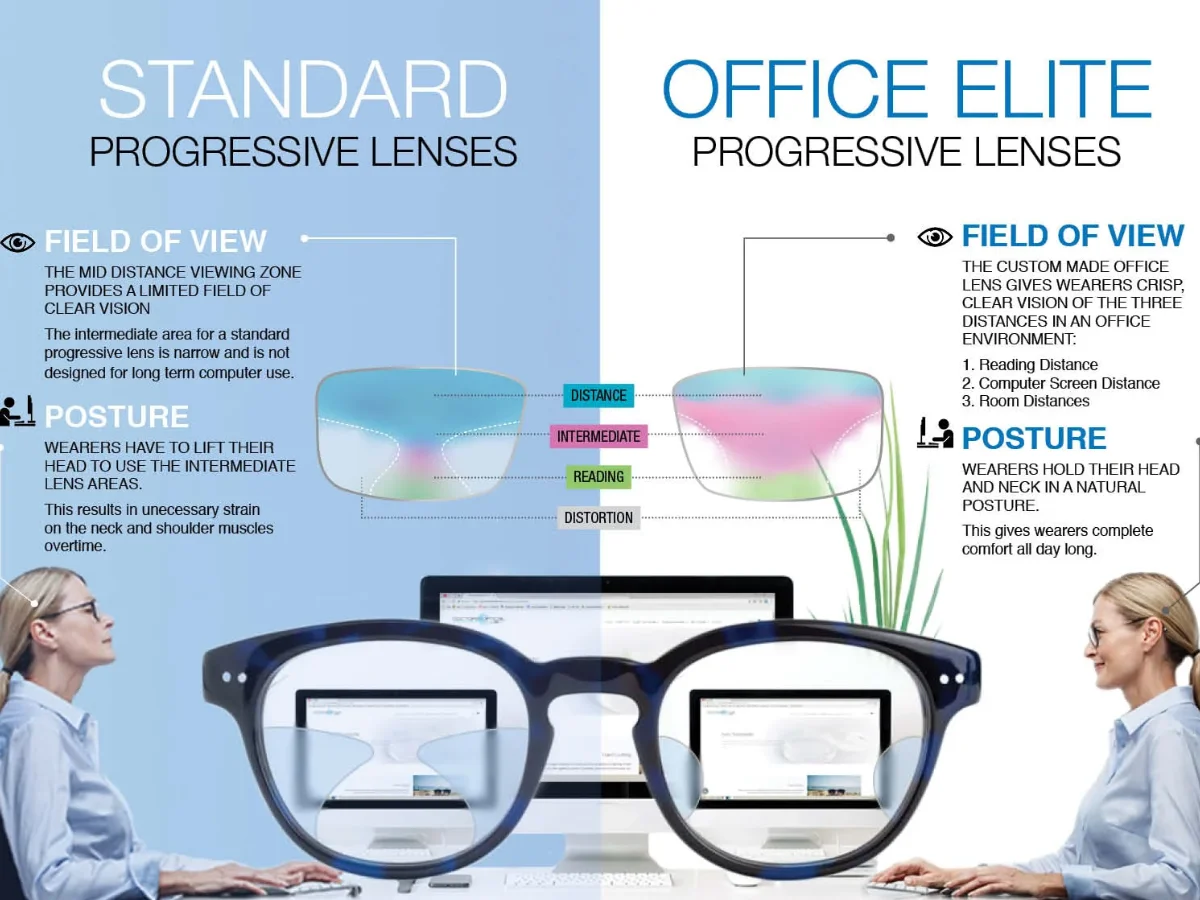When it comes to eyeglasses, one size doesn’t fit all. For those who need corrective lenses for both distance and reading, progressive lenses offer a seamless solution. But how much do progressive lenses cost, especially if you’re considering getting them at LensCrafters? In this article, we’ll explore the factors that influence the cost of progressive lenses and what you can expect when you visit LensCrafters for your eyewear needs.
Introduction
Good vision is invaluable, and for those who need glasses, the choice of lenses is essential. Progressive lenses are a popular choice for individuals with presbyopia, a condition that makes it challenging to focus on objects up close. But before you invest in these lenses, it’s crucial to understand their cost and what influences it.
Understanding Progressive Lenses
2.1. What Are Progressive Lenses?
Progressive lenses, often referred to as “no-line bifocals” or “multifocal lenses,” are eyeglass lenses that provide a seamless progression of prescription strengths, from distance vision at the top to close-up vision at the bottom, with no visible lines.
2.2. Benefits of Progressive Lenses
Progressive lenses offer several advantages, including:
- Natural Transition: Smooth transition between different prescription strengths.
- No Visible Lines: No unsightly lines on the lens surface.
- Clear Vision at All Distances: Sharp vision for distance, intermediate, and close-up tasks.
Factors That Affect the Cost of Progressive Lenses
3.1. Lens Material
The material used for the lenses can significantly impact the cost. Common materials include plastic, polycarbonate, and high-index materials, each with its own pricing.
3.2. Lens Design and Brand
Progressive lenses come in various designs and brands. Custom-designed or premium-brand lenses may come at a higher cost.
3.3. Lens Coatings
Anti-reflective coatings, scratch-resistant coatings, and UV protection can add to the cost but enhance the durability and performance of the lenses.
3.4. Additional Features
Some lenses offer additional features like blue light protection or photochromic (transition) capabilities, which can affect the price.
3.5. Your Prescription
The complexity of your prescription, including the strength and any astigmatism correction, can impact the cost.
How Much Do Progressive Lenses Cost at LensCrafters?
The cost of progressive lenses at LensCrafters can vary widely based on the factors mentioned above. On average, you can expect to pay anywhere from $100 to $400 or more for a pair of progressive lenses. Premium or customized options may cost more.
Tips for Managing the Cost
To manage the cost of progressive lenses:
- Check Insurance: If you have vision insurance, it may cover a portion of the cost.
- Compare Options: Ask for quotes and compare prices from different optical shops.
- Choose Wisely: Consider your visual needs and lifestyle when selecting lens features.
Conclusion
Progressive lenses offer a seamless solution for individuals with presbyopia, but their cost can vary based on several factors. When considering progressive lenses at LensCrafters or any other optical shop, it’s essential to understand these factors and make an informed decision that aligns with your visual needs and budget.
FAQs (Frequently Asked Questions)
7.1. What are the advantages
of progressive lenses?
Progressive lenses offer seamless vision correction for distance, intermediate, and close-up tasks with no visible lines, providing natural and clear vision at all distances.
7.2. Do insurance plans cover progressive lenses?
Many vision insurance plans offer coverage for progressive lenses, but the extent of coverage varies. Check with your insurance provider for details.
7.3. How often should I replace my progressive lenses?
The lifespan of progressive lenses is typically about 2 to 3 years, but it can vary depending on your prescription changes and the quality of the lenses.
7.4. Can I use my old frames with new progressive lenses?
In many cases, you can use your existing frames with new progressive lenses as long as the frames are in good condition and compatible with the new lenses.
7.5. Are there any alternatives to progressive lenses?
Yes, alternatives include bifocals (with visible lines), trifocals, and reading glasses, but these may not offer the same seamless vision correction as progressive lenses.
Read More: https://www.rozyjos.com/
More Related:
Is Progressive Gold Membership Full Coverage?
How Does Full Coverage Insurance Work If Your Car Is Totaled?
What Happens When Your Car Is Totaled but Still Drivable?
Is It Better to Have a Car Totaled or Repaired?
How to Convert Progressive Prescription to Reading Glasses

